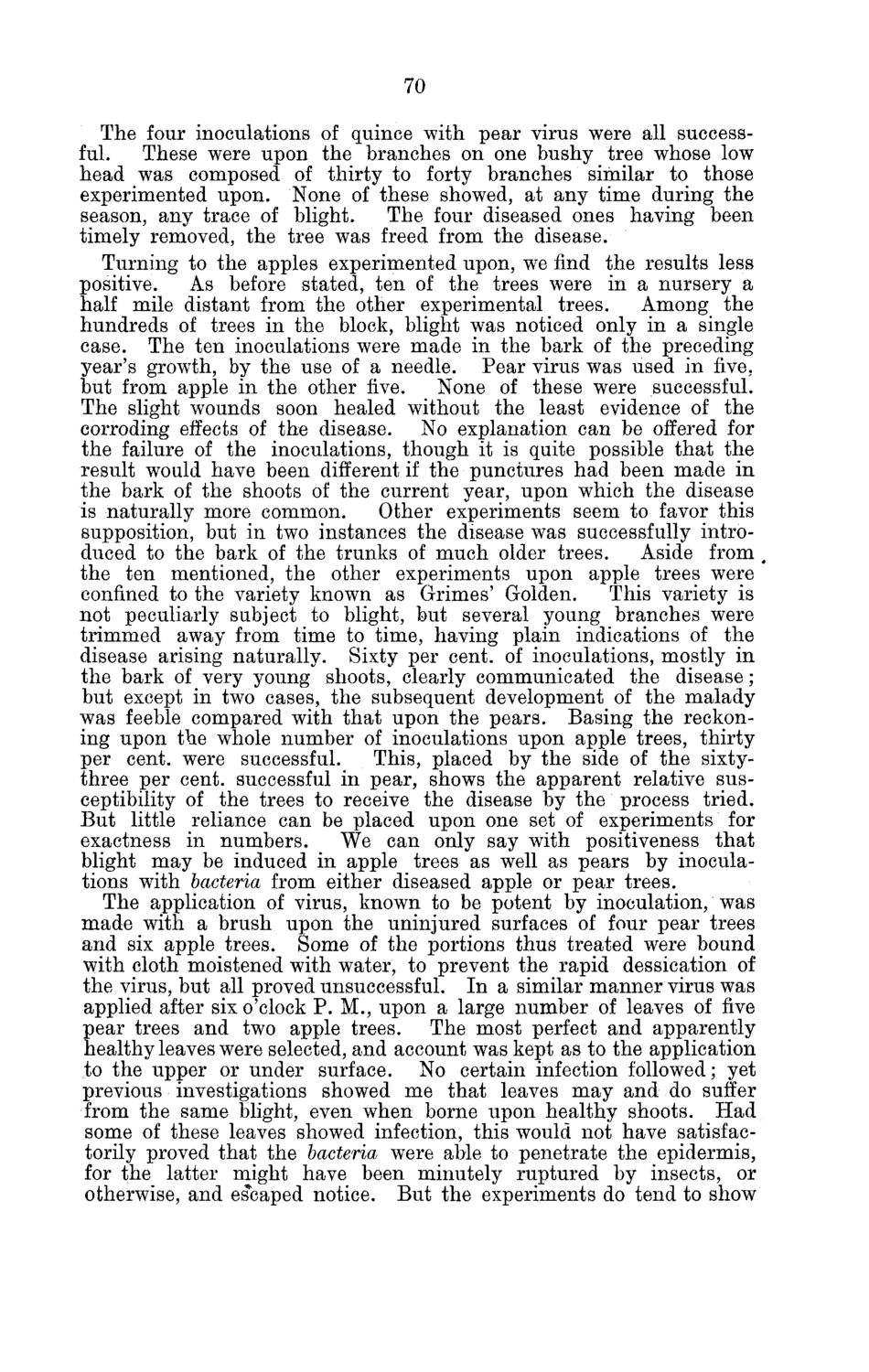| |
| |
Caption: Board of Trustees Minutes - 1880
This is a reduced-resolution page image for fast online browsing.

EXTRACTED TEXT FROM PAGE:
70 The four inoculations of quince with pear virus were all successful. These were upon the branches on one bushy tree whose low head was composed of thirty to forty branches similar to those experimented upon. None of these showed, at any time during the season, any trace of blight. The four diseased ones having been timely removed, the tree was freed from the disease. Turning to the apples experimented upon, we find the results less positive. As before stated, ten of the trees were in a nursery a half mile distant from the other experimental trees. Among the hundreds of trees in the block, blight was noticed only in a single case. The ten inoculations were made in the bark of the preceding year's growth, by the use of a needle. Pear virus was used in five, but from apple in the other five. None of these were successful. The slight wounds soon healed without the least evidence of the corroding effects of the disease. No explanation can be offered for the failure of the inoculations, though it is quite possible that the result would have been different if the punctures had been made in the bark of the shoots of the current year, upon which the disease is naturally more common. Other experiments seem to favor this supposition, but in two instances the disease was successfully introduced to the bark of the trunks of much older trees. Aside from the ten mentioned, the other experiments upon apple trees were confined to the variety known as Grimes' Golden. This variety is not peculiarly subject to blight, but several young branches were trimmed away from time to time, having plain indications of the disease arising naturally. Sixty per cent, of inoculations, mostly in the bark of very young shoots, clearly communicated the disease ; but except in two cases, the subsequent development of the malady was feeble compared with that upon the pears. Basing the reckoning upon the whole number of inoculations upon apple trees, thirty per cent, were successful. This, placed by the side of the sixtythree per cent, successful in pear, shows the apparent relative susceptibility of the trees to receive the disease by the process tried. But little reliance can be placed upon one set of experiments for exactness in numbers. We can only say with positiveness that blight may be induced in apple trees as well as pears by inoculations with bacteria from either diseased apple or pear trees. The application of virus, known to be potent by inoculation, was made with a brush upon the uninjured surfaces of four pear trees and six apple trees. Some of the portions thus treated were bound with cloth moistened with water, to prevent the rapid dessication of the virus, but all proved unsuccessful. In a similar manner virus was applied after six o'clock P. M., upon a large number of leaves of five pear trees and two apple trees. The most perfect and apparently healthy leaves were selected, and account was kept as to the application to the upper or under surface. No certain infection followed; yet previous investigations showed me that leaves may and do suffer from the same blight, even when borne upon healthy shoots. Had some of these leaves showed infection, this would not have satisfactorily proved that the bacteria were able to penetrate the epidermis, for the latter might have been minutely ruptured by insects, or otherwise, and escaped notice. But the experiments do tend to show
| |